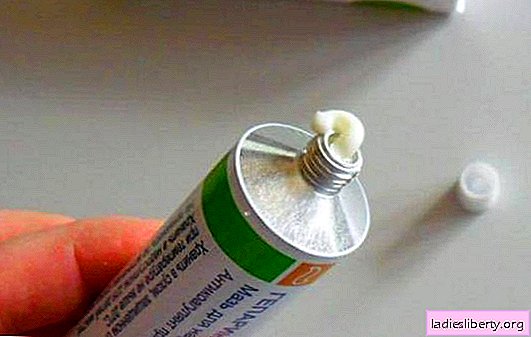
In household plots, lilies of different varieties and species are grown.
All of them need special care and care, especially in the autumn period. Some summer residents persistently insist that the lily bulbs tolerate frost well and they do not need any preparation, but this is not so. If you want the flowerbed to be buried in flowers next summer, you need to adhere to some tips from experienced gardeners.
What is the preparation of lilies for winter for?
Despite the fact that nature endowed the bulbs with special strength, it is still necessary to help them survive the cold. Without shelter and other activities, the plant simply will not survive. In the spring, instead of a lush flowerbed at the landing site, you can find several miserable plants, which, most likely, will not give color.
To enjoy the bright and memorable flowering, you need to make a lot of work autumn, especially in the northern regions. Even if lilies are grown in warm climates, where there is no severe frost, they still need preparation for winter. In the cold season, bulbs of plants attract rodents. Therefore, at the preparation stage, you need to protect them as much as possible from pests.
In addition, spring flooding is harmful to lilies. Therefore, in the fall, you need to think about where to place the garden with your favorite plants.
When to prepare lilies for winter: the timing of work
Experienced gardeners begin to take care of the lilies from the moment of planting. Choosing a bed, you need to evaluate the possibility of flooding of the bulbs in the spring. If such a possibility is not excluded, it is necessary to equip the landing holes with drainage or choose another site.
The timing of the work depends on whether the bulbs will winter in the garden. If the lilies will be dug up for the winter, and further planting is planned for the spring, then the work must be completed no later than October. If the lilies will winter in the ground, then they are excavated in August.
Care for lilies in the autumn, photo
Preparation of lilies for the cold takes place in stages. Each type of work is carried out strictly on schedule.
Pruning lilies in the fall
At the stage of preparing the lilies for wintering, it is necessary to prune them, leaving only stems about 10 cm long. This procedure is carried out in the fall. Some gardeners advise cutting off the flower arrow immediately after flowering. But nothing happens in nature in vain. The period after flowering is very important for the plant. At this point, nutrients are laid for future flowering. They gradually sink down to the bulb. You can cut the arrow only after its natural drying.

Feeding lilies before winter
Inexperienced gardeners are interested in why feeding lilies after flowering? During this period, there is not only the accumulation of nutrients, but also the maturation of the bulb. The plant needs additional nutrition. Apply potash and phosphorus fertilizers.
The following recipe has proven itself:
• 1 tsp superphosphate;
• 1 tsp potassium salt.
Mix and dissolve all components in 5 liters of hot water. A bush is watered with a warm solution, at the rate of 0.5 liters per plant.
Important! The use of nitrogen fertilizers in the autumn is contraindicated. It is better to leave them for spring food.
Hide or not planting lilies for the winter?
This question tormentes every gardener. But to answer it is definitely very difficult. Nothing will be bad if you cover the bed with plants with dry foliage, sawdust or straw.
Seasoned summer residents are advised to use needles as mulching material. It will not only protect the plantings from frost, but also protect it from snails and rodents. Bulb pests do not like this “treat”.
Do not forget that snow is an excellent insulation. In regions with snowy winters, regularly toss it on a flower bed with lilies. If there is little snow in winter, then the layer of mulch needs to be made thicker.
When to insulate a bed with lilies? Start work in late autumn, when the topsoil is already frozen.
How to protect lilies from meltwater
It happens that all the efforts of the gardener go down the drain. It seems that the garden was insulated and fed, and the winter was not harsh, and the flowers still get sick or disappear, there are few seedlings, and those that are look sad. What is the reason? The bulbs were flooded with meltwater, and they just started to rot. Lilies do not tolerate excess moisture at the roots. How to help the plant?
You need to take care of a comfortable wintering of the bulbs at the time of planting. You can make a high bed and good drainage. River sand is laid on the bottom of the hole and on top of the bulb with a layer of 5-10 cm. It serves as protection against flooding, removes excess moisture from the root system.

Some gardeners advise covering the place of planting of lilies with film, slate or roofing material. Such material will not let melt spring water to the roots. When it gets warmer, it is enough to remove the covering material, and the leaves can be left on the bed as fertilizer.
Wintering lilies in the house: how to prepare bulbs
Very often, gardeners dig bulbous plants and leave them for wintering at home. Despite this, the flower also needs to be prepared for the rest period. Care for lilies in the fall should occur in accordance with all the rules.
1. Be sure to cut off all the stems of the plant when they are laid down.
2. Digging of lilies is carried out in mid-September or early October. The procedure must be carried out carefully, trying not to damage the rhizomes. As a rule, use a pitchfork.
3. Dug bulbs freed from the ground, washed in running warm water.
4. Next, all the seed is sorted. Damaged roots and scales are removed, lilies are laid out in size.
5. For good preservation of planting material, it is treated with a solution of potassium permanganate or karbofos.
6. Prepared rhizomes are dried in air or in a room with good ventilation, away from sunlight.
7. Next, all the bulbs are stored.
If the points were observed, then, most likely, the plants will well tolerate the dormant period and in the spring they will delight friendly shoots.
Important! At the drying stage, try not to dry the bulbs. They should remain juicy and dense. The gardener's task is to rid the planting material of surface moisture so that the process of decay does not begin.
Where to store bulbs in winter
The main task at this stage is the creation of conditions for a comfortable wintering. Bulbs can be stored on the bottom shelf of the refrigerator, in the basement or on the loggia. The main rule - the room temperature should not fall below 0 degrees.
If the storage room is too wet, then you need to inspect the rhizomes more often for signs of rot. With low humidity, a package with lilies is visited in wet moss.
Bulbs can be stored in the basement in cardboard boxes. Sawdust, sand or wet peat is poured into the bottom and on top of the bulbs. You can cover the containers with lilies with a wet burlap.
During storage, do not forget to regularly inspect the planting material. If necessary, moisten it or disinfect it in a solution of potassium permanganate.
To summarize
When caring for lilies in the fall, it is important to follow all the necessary rules and help plants survive the cold. In this case, one must take into account the variety and climatic conditions in which the flowers are grown.











